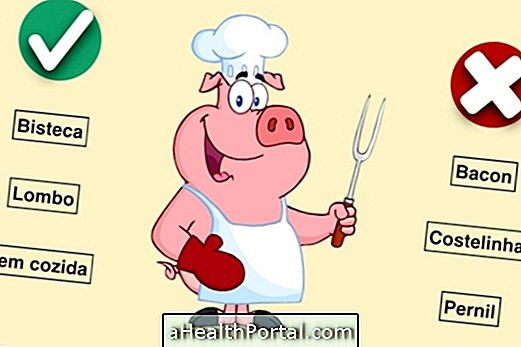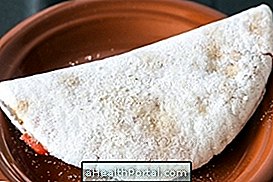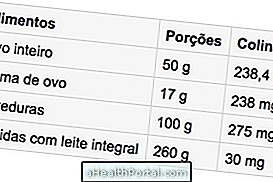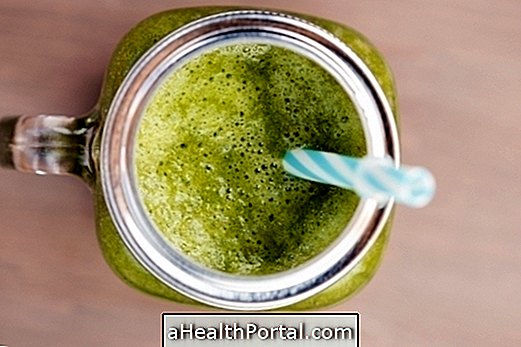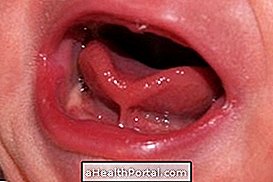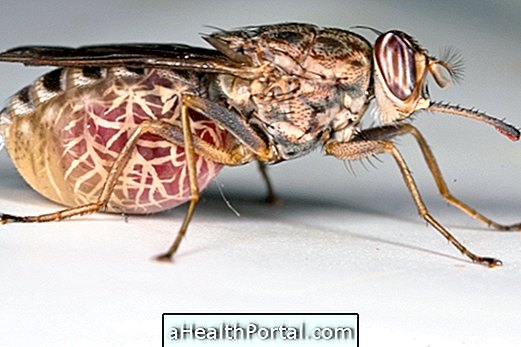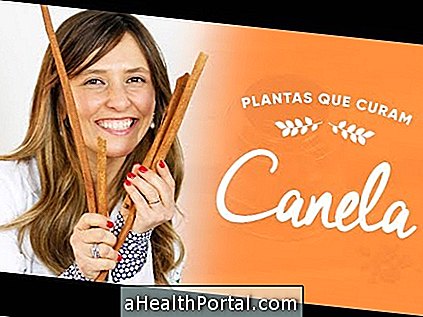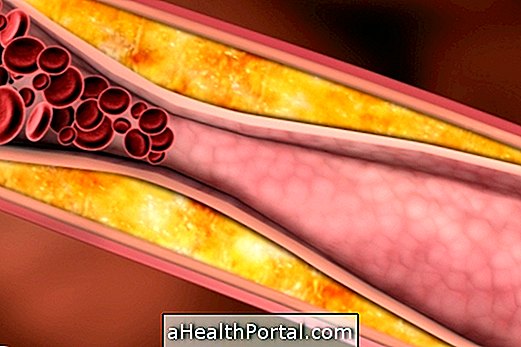Every diabetic should know the amount of carbohydrate in their food in order to know the exact amount of insulin they should use after each meal. To do this, simply learn how to count the amount of food.
Knowing how much insulin to use is important because it helps prevent diabetes complications such as vision problems or poor kidney function as the disease gets better controlled because insulin is given according to the food intake.
How to Carbohydrate Counting
To perform this technique it is crucial to know which foods contain carbohydrates, to adjust the amount of insulin needed. You may know this by reading the food label or weighing the food on a small kitchen scale.
Foods That Contain Carbohydrates
Foods containing carbohydrates, also known as carbohydrates, carbohydrates or sugars, are represented on the labels of the packaging by the abbreviations HC or CHO. Some examples are:

- Cereals and their derivatives, such as rice, corn, bread, pasta, crackers, cereals, flour, potatoes;
- Legumes such as beans, chickpeas, lentils, peas and fava beans;
- Milk and yogurt;
- Fruit and natural fruit juices;
- Sugar-rich foods like candy, honey, marmalade, jam, soda, candy, biscuits, cakes, desserts and chocolate.
However, to know the exact amount of carbohydrate in a food you should read the label or weigh the still raw food. After that, it is important to make the rule of 3 for the amount you are going to eat.

Foods that should not be counted
Foods that do not need to be counted because they have a very small amount of carbohydrates are high-fiber foods like vegetables.
In addition, food fat increases blood glucose only when ingested in large quantities, and ingestion of alcoholic beverages, without food, can cause low blood sugar both in people who use insulin and in those who use oral hypoglycemic agents up to 12 hours after your intake.
Step by step to calculate the amount of insulin
To calculate the amount of insulin depending on what is ingested you need to make some simple bills. All calculations should be explained by your doctor, nurse or nutritionist, so that you are able to do the accounts yourself. The calculation consists of:
1. Make Subtract - After the finger prick to measure the blood sugar, you need to make the difference between the blood glucose obtained before eating and the target blood glucose, which is the one you are expected to have in that time of day. This value should be indicated by the doctor in a consultation, but generally the target blood glucose value ranges from 70 to 140.

2. Counting split - Then divide this value (150) by the sensitivity factor, which is how much 1 unit of fast insulin is able to reduce the value of blood glucose.

This value is calculated by the endocrinologist and must be followed by the patient, as it is influenced by factors such as physical activity, disease, use of corticosteroids or weight gain, for example.
3. Count add - You must add all the foods that contain carbohydrates that you will ingest in a meal. For example: 3 tablespoons of rice (40g HC) + 1 medium fruit (20g HC) = 60g HC.

4 . Dividing account - Then one should divide this value by the amount of carbohydrates that 1 unit of fast insulin covers, which in most cases corresponds to 15 g of carbohydrates.

This amount is determined by the doctor individually, and may be different at each meal or time of day. For example, 60 g HC / 15 g HC = 4 units of insulin.
5. Adding Count - Lastly, add the amount of insulin to correct the glucose value calculated in step 1 and add the amount of insulin to the amount of carbohydrate to be ingested by obtaining the final amount of insulin which must be administered.

In some cases, the insulin value is not accurate, for example, 8.3 units, and the amount should be rounded to 8 or 9, according to the limit of 0.5.
Carbohydrate counting table for diabetics
Here is an example of a carbohydrate counting chart for diabetics that helps the patient know how many grams of carbohydrate they eat at meals.
| Foods | Carbohydrates | Foods | Carbohydrates |
| 1 glass of skim milk (240 ml) | 10 g HC | 1 tangerine | 15 g HC |
| 1 slice of minas cheese | 1 g HC | 1 tablespoon of beans | 8 g HC |
| 1 tablespoon rice soup | 6 g HC | Lentil | 4 g HC |
| 1 tablespoon of pasta | 6 g HC | Broccoli | 1 g HC |
| 1 French bread (50g) | 28 g HC | Cucumber | 0 g HC |
| 1 medium potato | 6 g HC | Egg | 0 g HC |
| 1 apple (160g) | 20 g HC | Chicken | 0 g HC |
Generally, the nutritionist or doctor gives a list similar to this table where foods and their amounts are described.
After the calculations, one should apply the insulin through an injection that can be administered to the arm, thigh or belly, varying the sites to avoid hematomas and nodules under the skin. Here's how to apply insulin correctly.
Practical example of carbohydrate counting
At lunch he ate 3 tablespoons of pasta, half tomato, ground beef, 1 apple and water. To know how much insulin you should take for this meal, you should:
- Check which foods have carbohydrates from the meal: pasta and apple
- Make sure to know how many carbs have 3 tablespoons of pasta: 6 x 3 = 18 gHC (1 spoon = 6 gHc - see label)
- Weigh apple on kitchen scale (because it has no label): 140g weight and make a rule of 3 simple: 140 x 20/160 = 17.5 gHC
- Check the amount indicated by the doctor for the amount of carbohydrate you eat at each meal: 0.05.
- Make an account to know the total amount of carbohydrates of the lunch: 18 + 17.5 = 35.5gHC and multiply by the value recommended by the doctor (0.05) = 1.77 Units of Insulin. In this case, to compensate this meal should apply 2 units of insulin.
However, before eating should make the picadinha in the finger to know what the current glycemia and in case of being superior to the recommended, generally superior to 100g / dl, one must add insulin to the one that will apply to eat.
Why Use The Carbohydrate Counting Technique?
Carbohydrate counts for type 1 diabetics help the patient adjust the exact amount of insulin he or she needs to take for the meal to be made, and in adults usually 1 unit of fast or ultra fast insulin, such as Humulin R, Novolin R or Insunorm R, covers 15 grams of carbohydrates.
In the case of type 2 diabetes, it is possible to effectively control the amount of food eaten at meals, helping to maintain calories, controlling weight and avoiding other complications, such as metabolic syndrome.
However, this technique should only be started by indication of the endocrinologist and it is fundamental to follow the diet indicated by the nutritionist, applying the recommended rules.


